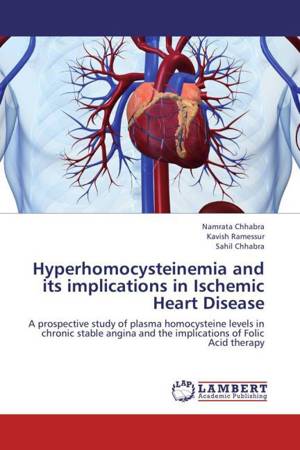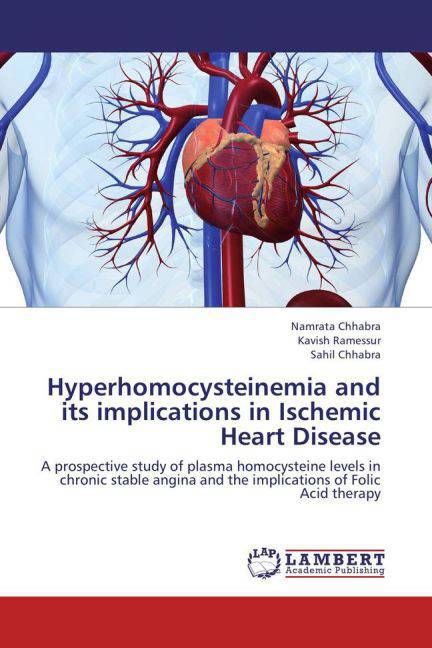
Je cadeautjes zeker op tijd in huis hebben voor de feestdagen? Kom langs in onze winkels en vind het perfecte geschenk!
- Afhalen na 1 uur in een winkel met voorraad
- Gratis thuislevering in België vanaf € 30
- Ruim aanbod met 7 miljoen producten
Je cadeautjes zeker op tijd in huis hebben voor de feestdagen? Kom langs in onze winkels en vind het perfecte geschenk!
- Afhalen na 1 uur in een winkel met voorraad
- Gratis thuislevering in België vanaf € 30
- Ruim aanbod met 7 miljoen producten
Zoeken
Hyperhomocysteinemia and its implications in Ischemic Heart Disease
A prospective study of plasma homocysteine levels in chronic stable angina and the implications of Folic Acid therapy
Namrata Chhabra, Kavish Ramessur, Sahil Chhabra
Paperback | Engels
€ 83,45
+ 166 punten
Omschrijving
As an emerging independent risk factor for cardiovascular disease, homocysteine related research has sparked a vigorous debate over the past decade. Since insufficient data are available to depict the correlation of rising plasma homocysteine levels with various biochemical parameters, the present study aimed not only at determining the magnitude of risk associated with hyperhomocysteinemia and the effect of folic acid therapy in patients of chronic stable angina in the absence of other conventional risk factors but also aimed to ascertain the possible correlations of homocysteine with other biochemical parameters so as to determine the implications in the causation of Ischemic Heart Disease. At present, the magnitude of the benefit remains uncertain, but an increase in folic acid intake among the general population can lead to a worthwhile reduction in mortality from Ischemic Heart Disease. Thus an attempt has been made through this study to ascertain whether hyperhomocysteinemia should be ignored or be considered as an independent but modifiable risk factor?
Specificaties
Betrokkenen
- Auteur(s):
- Uitgeverij:
Inhoud
- Aantal bladzijden:
- 188
- Taal:
- Engels
Eigenschappen
- Productcode (EAN):
- 9783659384356
- Verschijningsdatum:
- 31/05/2013
- Uitvoering:
- Paperback
- Afmetingen:
- 150 mm x 220 mm
- Gewicht:
- 281 g

Alleen bij Standaard Boekhandel
+ 166 punten op je klantenkaart van Standaard Boekhandel
Beoordelingen
We publiceren alleen reviews die voldoen aan de voorwaarden voor reviews. Bekijk onze voorwaarden voor reviews.









